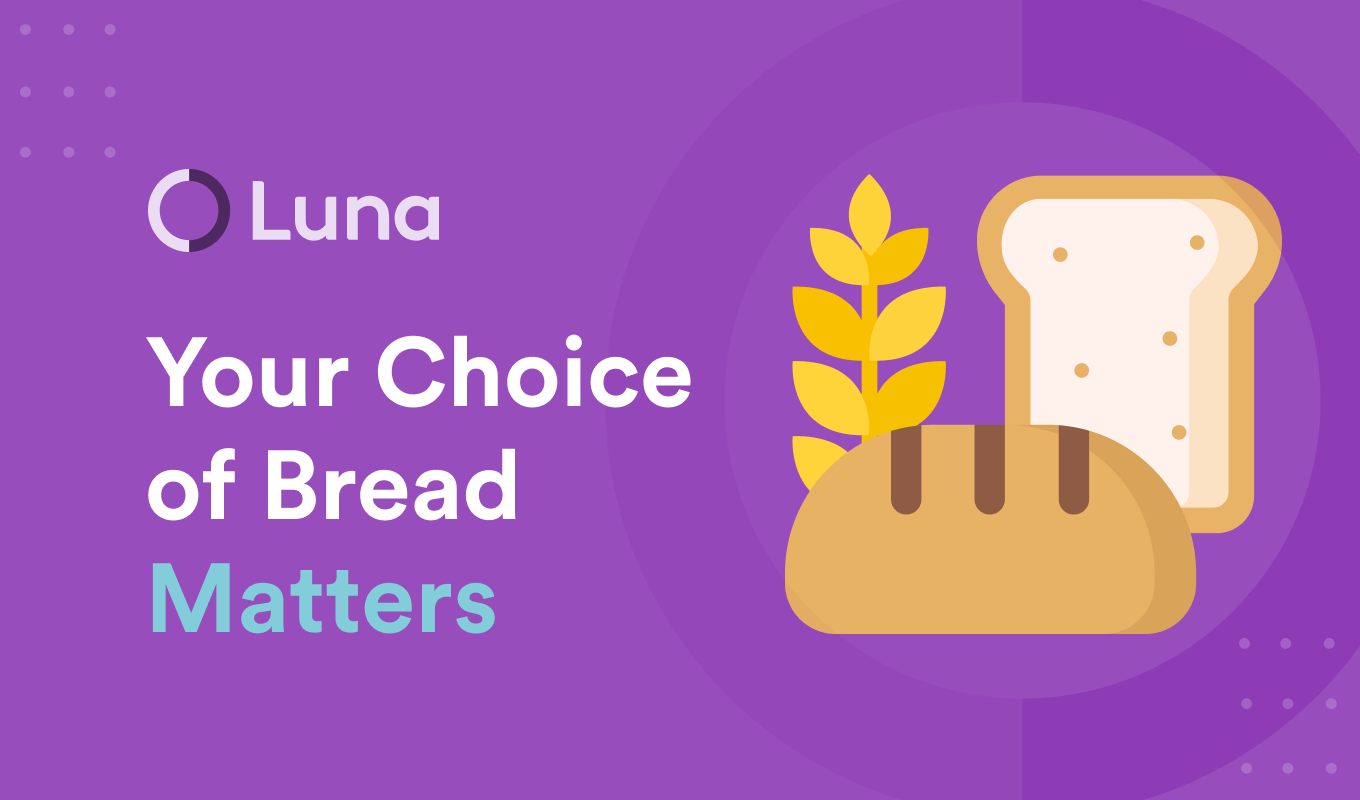All Bread Is Not Made Equal: A Guide to Buying Healthy Bread

Do you ever feel like it’s hard to know what to buy and what to look for to maintain a healthy diet? You’re not alone!
Even staples like bread are often viewed (mistakenly!) as an unhealthy indulgence, when in fact, bread can be a healthy part of your diet when chosen carefully and consumed in moderation.
We’ve included some easy tips on picking different types of bread that are both delicious and nutritious so you can be confident in your choices.
Nutrition Trends Over The Years
Our eating habits have changed drastically over the decades, from the dominance of supermarkets and fast food in the 1990s and 2000s to the rise of clean eating, plant-based diets, and superfoods.
While documentaries and films like FEDUp, Super Size Me, and Food, Inc. have popularized the implications of unhealthy eating, they've also helped spike our interest in following better nutritional habits —and more recently, the COVID pandemic helped open our eyes to the importance of living a healthy lifestyle.
What to Look for in Healthy Bread
Understanding what qualities make a loaf of bread healthy will help you shop smarter and avoid misleading and deceptive health marketing. Here’s what you should be looking for:
- Whole Grains as the First Ingredient. Look for bread that lists whole grain as the first ingredient, such as whole wheat, whole rye, or another whole grain. This indicates that the bread contains more whole grains than any other ingredient.

- No Added Sugars and Low Sodium. Bread can be a hidden source of sugar and sodium. A high content of either can negatively impact health, particularly for those with conditions like diabetes and hypertension. Added sugars like sucrose, high fructose corn syrup, dextrose, or maltose can lead to spikes in blood glucose levels and contribute to calorie intake without offering any nutritional benefits.

- Minimal Ingredients. A shorter ingredient list often signifies fewer additives and preservatives, which is what you want! Try to choose bread with natural ingredients and without added fillers or conditioners.

- Nutrient Density. Some breads are fortified with additional nutrients like vitamins and minerals (such as vitamin D, calcium, or iron) that can help meet your nutritional needs.

- Fiber Content. Consider breads that provide at least 2 to 3 grams of fiber per slice. Higher fiber content typically points to less processing and better nutritional value.

Your Favorite Kinds of Bread Ranked
The most important factors about healthy bread are the ingredients and the way it’s produced. Unfortunately, taking the time to read the nutrition facts for ingredients takes a lot of time —time you probably wish you didn’t have to spend.
So, if you’re in a pinch and need to pick something healthy off the shelf, use our list below of commonly sold breads ranked from healthiest to least healthy:
 Sprouted Whole Grain Bread: Often contains no added sugars, offering better nutrient availability and digestibility. Ezekiel bread is a great example, rich in vital nutrients.
Sprouted Whole Grain Bread: Often contains no added sugars, offering better nutrient availability and digestibility. Ezekiel bread is a great example, rich in vital nutrients.
 Whole Grain Sourdough: Its natural fermentation process not only enriches the flavor but also improves digestion and reduces the need for added sugars.
Whole Grain Sourdough: Its natural fermentation process not only enriches the flavor but also improves digestion and reduces the need for added sugars.
 100% Whole Wheat Bread (with no added sugars): Opt for "100% whole wheat" bread without added sugars. Rich in fiber, iron, and potassium, it promotes heart health and digestion.
100% Whole Wheat Bread (with no added sugars): Opt for "100% whole wheat" bread without added sugars. Rich in fiber, iron, and potassium, it promotes heart health and digestion.
 Multigrain Bread (with no added sugars): It has a mix of grains and seeds, providing great nutrients. "Whole grains" must be listed early in the ingredients to avoid refined grains.
Multigrain Bread (with no added sugars): It has a mix of grains and seeds, providing great nutrients. "Whole grains" must be listed early in the ingredients to avoid refined grains.
 Oat Bread (Made from whole oats, no added sugars): Opt for bread made mainly from whole oats or oat flour. Its beta-glucan fiber promotes blood sugar control and heart health.
Oat Bread (Made from whole oats, no added sugars): Opt for bread made mainly from whole oats or oat flour. Its beta-glucan fiber promotes blood sugar control and heart health.
 Flaxseed Bread (ideally no added sugars): Includes whole grains and flaxseeds, which offer omega-3 fatty acids and fiber; a great nutritional option.
Flaxseed Bread (ideally no added sugars): Includes whole grains and flaxseeds, which offer omega-3 fatty acids and fiber; a great nutritional option.
 Whole Rye Bread or Pumpernickel: These are usually made from sourdough and have a lower glycemic index, which helps with blood sugar control.
Whole Rye Bread or Pumpernickel: These are usually made from sourdough and have a lower glycemic index, which helps with blood sugar control.
 Gluten-Free Breads (sugar-conscious choices): Necessary for gluten intolerance or celiac disease. Options with minimal sugars and healthy flour mixes have more benefits.
Gluten-Free Breads (sugar-conscious choices): Necessary for gluten intolerance or celiac disease. Options with minimal sugars and healthy flour mixes have more benefits.
 Regular Whole Wheat Bread (with added sugars): If it contains added sugars (most options) it's not ideal. This option is still better than white bread due to the whole grains.
Regular Whole Wheat Bread (with added sugars): If it contains added sugars (most options) it's not ideal. This option is still better than white bread due to the whole grains.
 White Bread: Made from refined wheat flour, it lacks fiber and nutrients making it the least healthy choice. Sadly, this type of bread accounts for over half of US bread sales.
White Bread: Made from refined wheat flour, it lacks fiber and nutrients making it the least healthy choice. Sadly, this type of bread accounts for over half of US bread sales.
The Two Sides of a Healthy Life
The first we already covered: eating healthy and making good nutritional decisions. The second? Staying active!
Knowing what you're putting in your body and understanding how to eat right is truly a superpower. It'll get you on the right track to living a healthier life, one bite at a time, while physical activity boosts your heart health, strengthens your muscles, and improves your mental well-being. And when it comes to staying active, physical therapy can be your biggest ally. It aids recovery and healing while also helping you maintain an active lifestyle safely and effectively.




